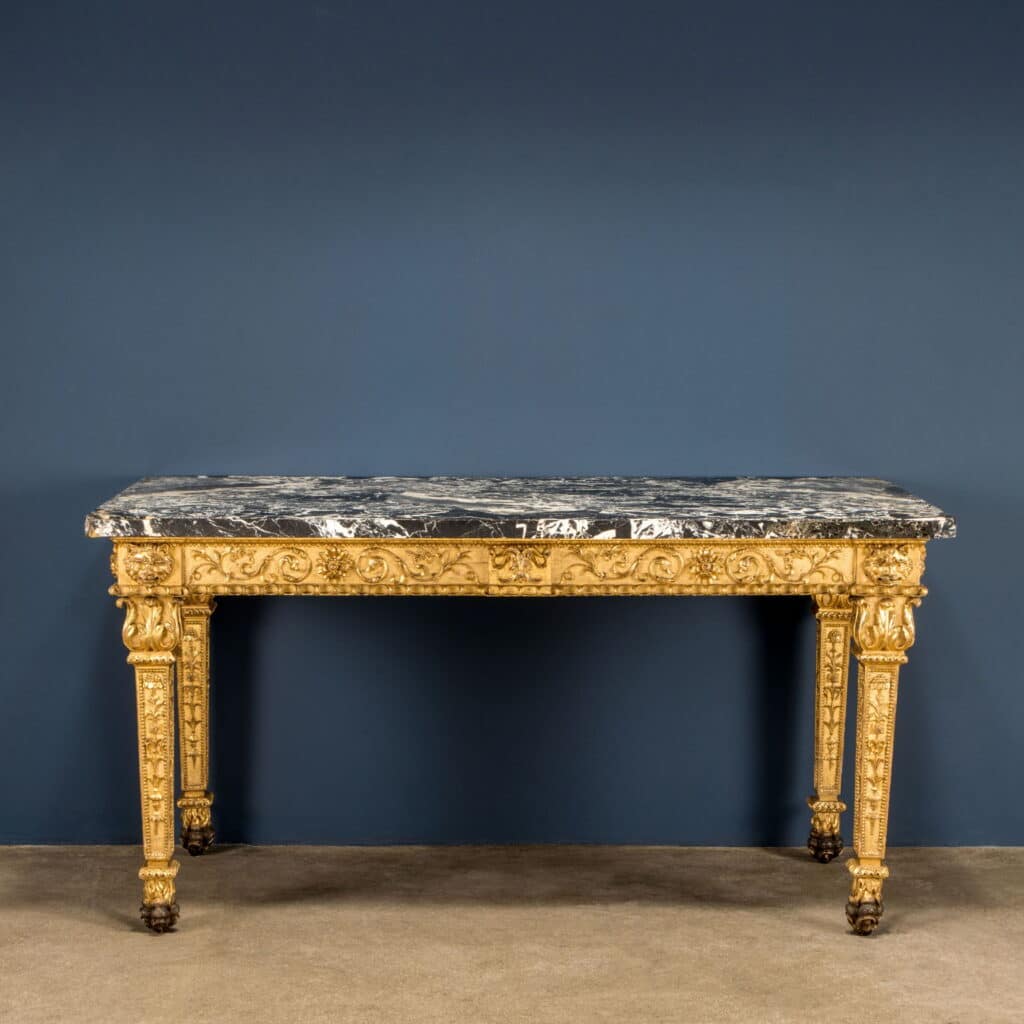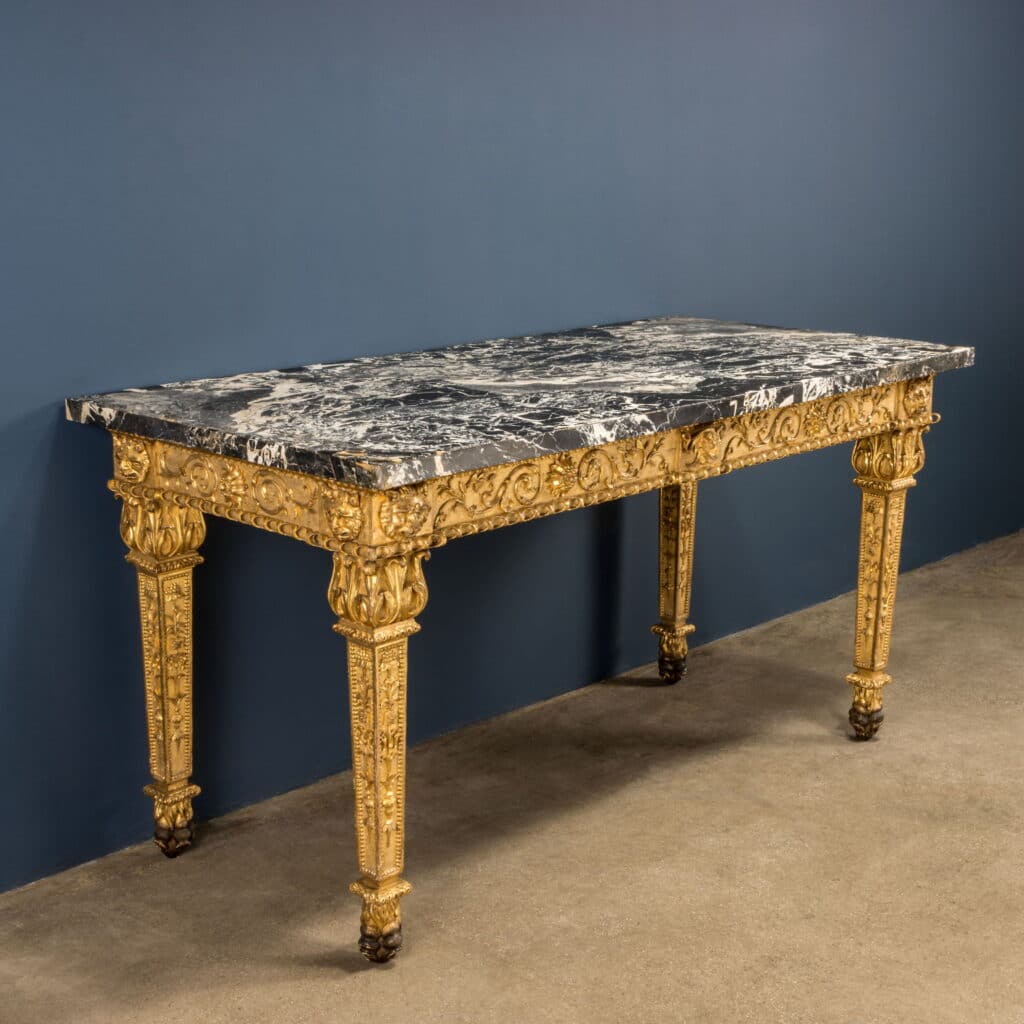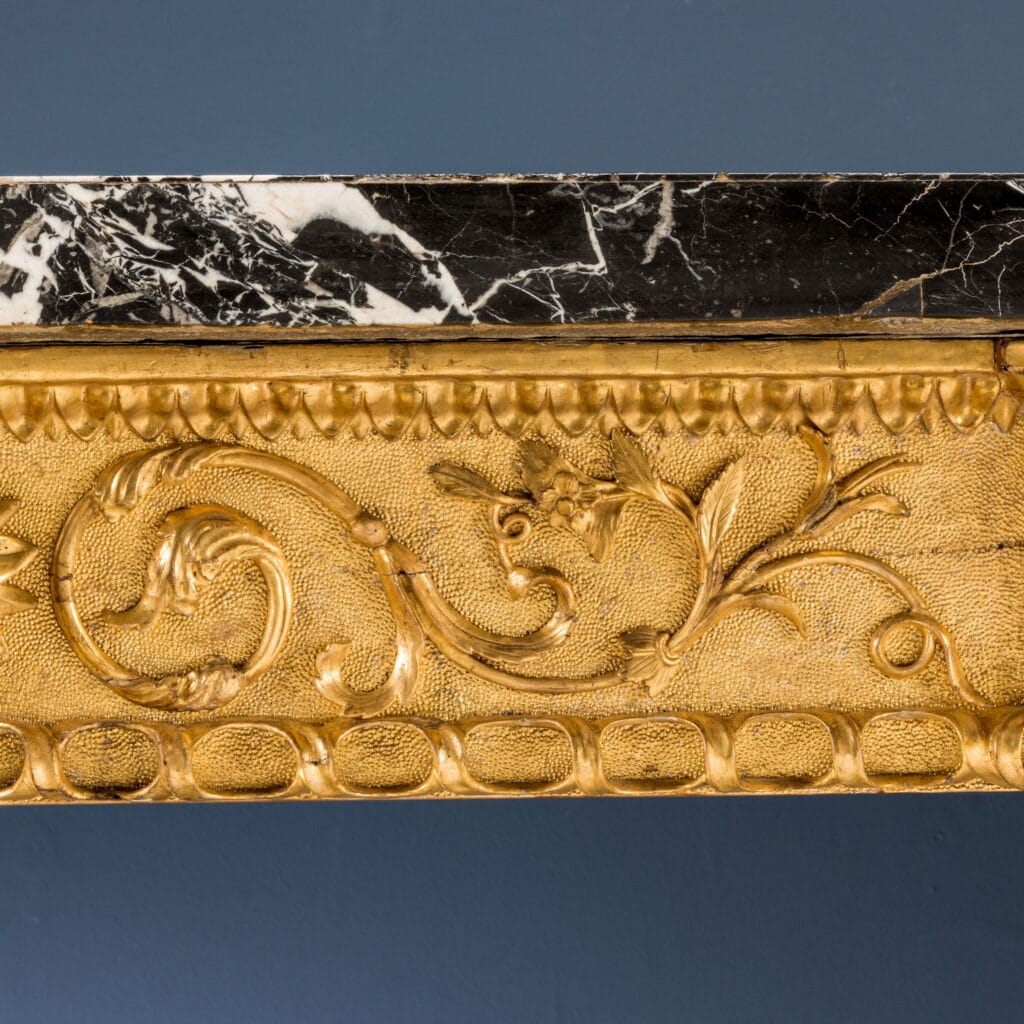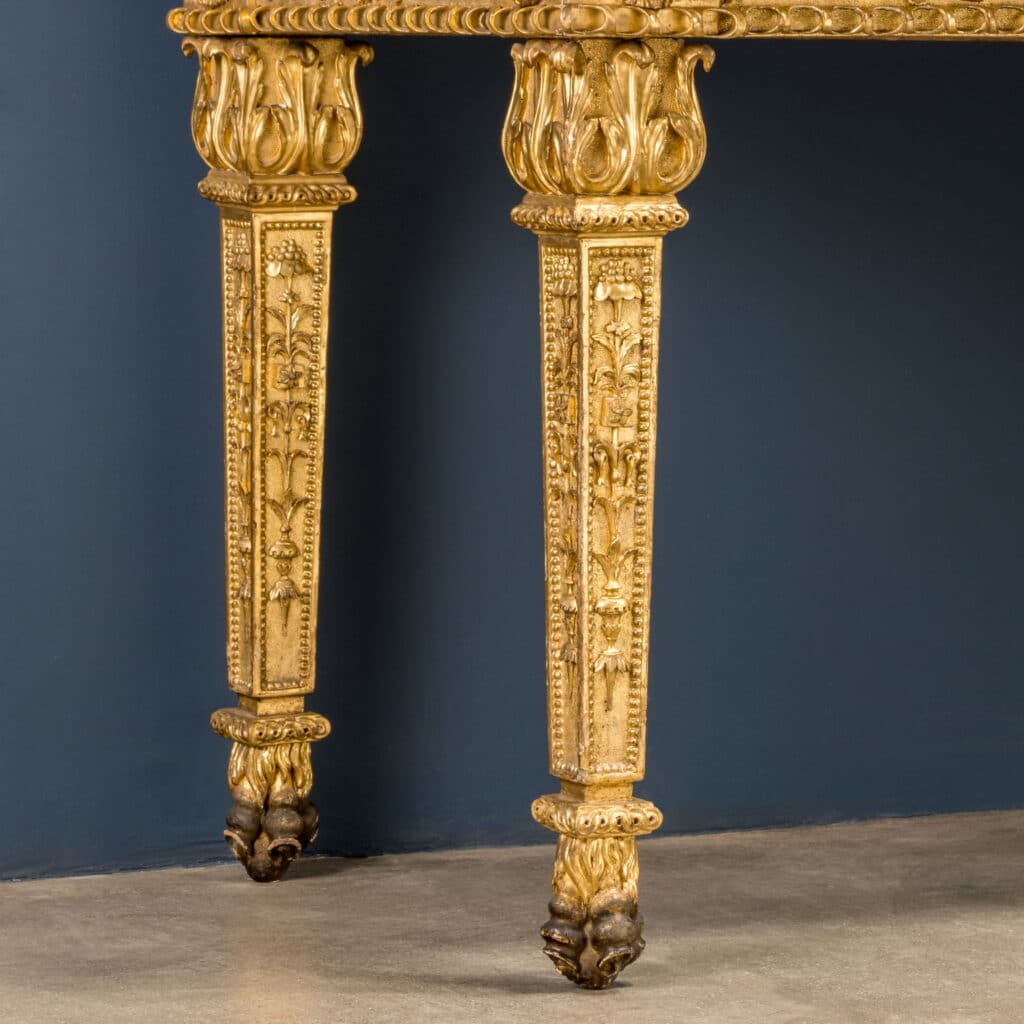Parietale table, Florence 1780-1785 ca.
Florence, 1780-1785 ca.
Description:
In carved, sculpted and gilded wood, it has uprights made up of a feral foot that holds a sphere on which an inverted obelisk element is grafted with faces carved with a candelabra motif contained by a beaded frame; a leafy head acts as an architectural connection with the fascia. The belt has a carving with opposing spirals and centered by a flower; on it protrude the corners with carved lion heads and a central folder with a ram’s head. Under the counter, the piece of furniture ends with a frame with successive leaves while the belt ends with a perforated frame with interwoven ribbon. The top is veneered in “antique black and white” marble.
Dimensions: cm 90 x 174,5 x 83,5
CODE: ANTACO0133041
Historical-stylistic analysis:
The stylistic choice of the low-height belt together with the composite supports that support it, brings the piece of furniture back to the stylistic features of the first Florentine neoclassicism. The decoration despite the Renaissance-style masks remains, in fact, linked to the English motifs of Adam taste, both in the decorative choice of the belt, and in the leafy head that connects it to the supports becoming an architectural element, as well as in the carved feet, an evident reinterpretation of the ” claw and ball “.
Some not dissimilar examples are found in Palazzo Pitti, others are now preserved in the Quirinale, where they arrived after the unification of Italy. The punctual comparison between these furnishings allowed Alvar Gonzalez-Palacios to hypothesize a single authorship, to be traced back, according to his studies, to the carvers active for the Gallery. As indicated by the payment notes, this is the carver Lorenzo Dolci who works with the help of his son Antonio and the gilder Pasquale Corsani.
The comparison between our furniture and those produced by these architects finds points of contact in the architectural setting as well as in the choice of the ornament, in this regard we can observe the spirals of the belt rather than the lion protomes as well as the candelabra carved on the supports. Finally, it is necessary to consider the technical implementation, the quality of the carving and the thick gilding. Specific to these furnishings is also the use of punched bottoms that we can also find on our console. The same background surfaces are found in the pair of consoles preserved in Palazzo Pitti, on which are placed the extraordinary tops made in order to a design by Cioci depicting marine elements.
Bibliography:
– Alvar González-Palacios, The Temple of Taste, Tuscany and Northern Italy, ed. Longanesi 1986;
– Alvar Gonzalez-Palacios, The artistic heritage of the Quirinale I Mobili Italiani, ed. Electa 1996;
– Simone Chiarugi, Furniture makers in Tuscany, ed. S.P.E.S. 1994;
– Enrico Colle, The neoclassical furniture in Italy, ed. Electa 2005;
– Enrico Colle, I mobili di Palazzo Pitti, il primo periodo lorense 1737-1799, ed. Allemandi & C. 1997.
- Parietale table, Florence 1780-1785 ca.

Antiques, Art and Design
FineArt is the new ambitious Di Mano in Mano project that offers an exclusive choice of antiques and design works, presenting them for their singularity and uniqueness.








